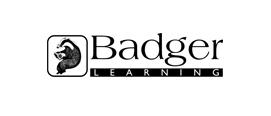Year 1: Everyday Materials
This list consists of lesson plans, activities and interactive resources to support the teaching of everyday materials in Year One. It contains tips on using the resources, suggestions for further use and background subject knowledge. Possible misconceptions are highlighted so that teachers may plan lessons to facilitate correct conceptual understanding. Designed to support the new curriculum programme of study it aims to cover many of the requirements for knowledge and understanding and working scientifically. The statutory requirements are that children are taught to:
• distinguish between an object and the material from which it is made
• identify and name a variety of everyday materials, including wood, plastic, glass, metal, water, and rock
• describe the simple physical properties of a variety of everyday materials
• compare and group together a variety of everyday materials on the basis of their simple physical properties.
Visit the primary science webpage to access all lists.
The Materials Song
Children may think that material means fabric so this song (with actions) will help reinforce the fact that there are many different materials used to make the things around us. Make some picture cards to show the materials and have children hold them up when they name them in the song to help learn the names of everyday materials. At this age children may still find it hard to differentiate between the object and the material from which it is made. Children could hold up an object saying what it is and what material it is made from.
Badger Science: Foundation and Key Stage One
Introduce this topic by going on a Materials Treasure Hunt. Detailed on page 39 on the pdf, it is an active way of finding out about the properties of materials.
A more tactile approach is used in the lesson which follows as children explore the properties of different materials using feely bags.
Further lessons look at the the uses of different materials based upon their properties. Working scientifically to find the best material for a towel or the best material for a tent for Teddy, is a great way of showing children that the properties of a material make it a good or bad choice for a particular purpose.
Perfectly Printable Puzzles *suitable for home teaching*
A worksheet showing two robots in which children spot similarities and differences and then identify and name as many materials as they can. It will also help children distinguish between an object and the material from which it is made. This could be useful in class or as a homework activity.
Everyday materials: let's build
This series of lessons is a great starting point for planning lessons on this topic.
In session C children compare and group a variety of everyday materials based on whether they float or sink. This activity provides an opportunity for children to make predictions and some may even give a reason why they think an object will float or sink. The objects could be placed into two hoops on the classroom floor clearly marked float or sink.
Session E tries to find out about the suitability of materials by building homes for the Three Little Pigs, trying to make them strong enough to withstand a hairdryer! What child could resist this?
Explore, Discover, Inspire: Practical Work in Primary Science
Building sandcastles is an activity loved by children (and adults) so who could resist investigating the best mixture of sand and water for making sandcastles. In this practical activity on page 15 children have fun exploring the properties of sand, whilst making observations and simple measurements to see which mixture is the best.




